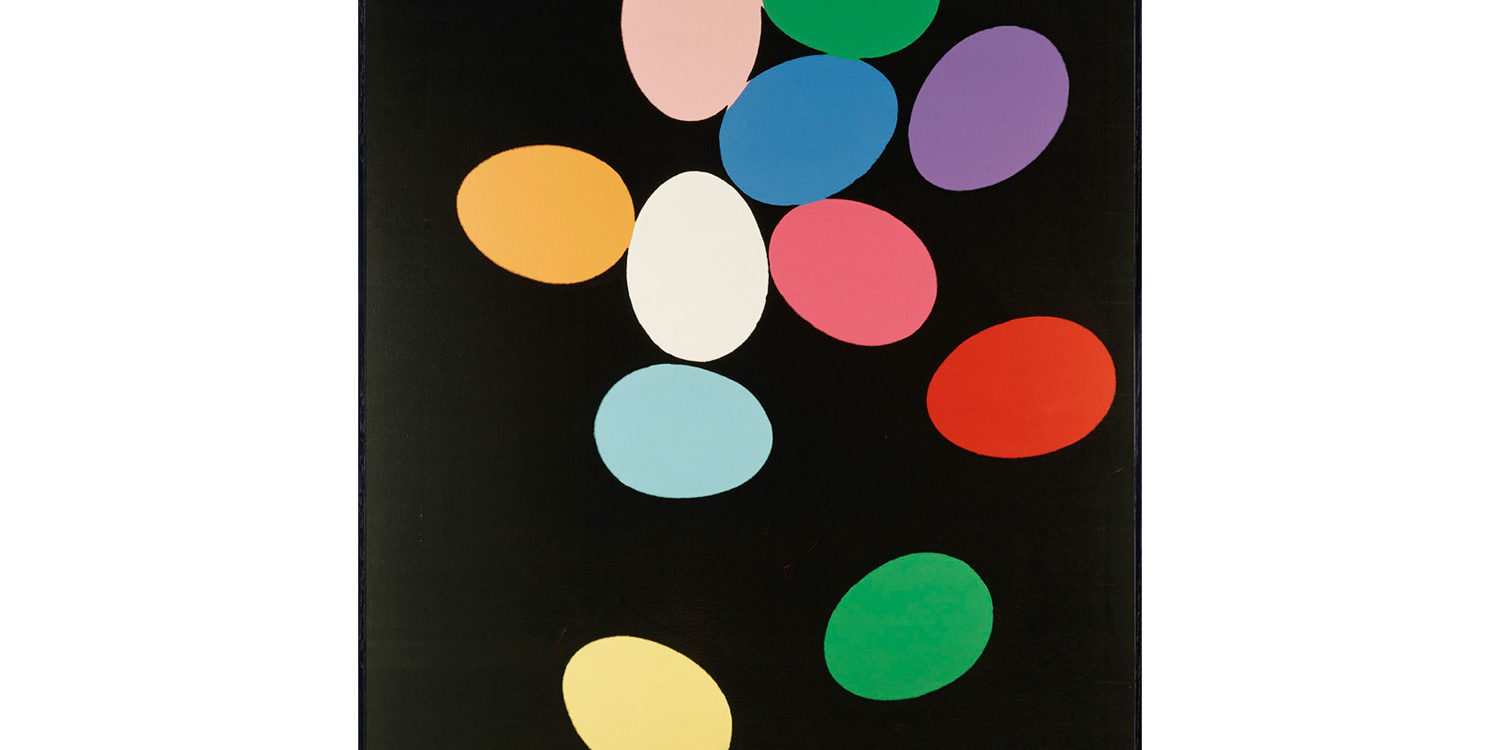*Loyola hosted theologian Brendan Sammon this week. Brendan teaches at St. Joseph’s University, the Jesuit university of Philadelphia. This post is prompted by his talk.
A recent fashion exhibition identified a range of objects said to be iconic (https://www.newyorker.com/culture/cultural-comment/moma-makes-a-list-of-iconic-fashion-items). But are they? Can any fashion object be iconic?
Leading phenomenologist, Frenchman Jean-Luc Marion, has proposed that an idol turns one’s gaze inwards or defies the look. By contrast, an icon extends the gaze and invites a deepening encounter. Warhol’s Eggs certainly does the latter. Some think it a work of Christian iconography, the egg a symbol of resurrection and hope of life renewed. Perhaps. The positioning of the eggs makes me think Warhol is being playful, the eggs echoing what sperm looks like under a microscope. It is a painting of procreation. A theme still redolent with Christian meaning.
What conditions would need to be met for a fashion object to be iconic? Minimally, it must help me escape solipsism: the icon pulls me beyond myself (transcendence). To be iconic, fashion must help me become aware of a world beyond me with an integrity of its own (realism) and therewith a world that helps me understand myself and my choices (identity).
Professor Sammon offered a potent observation: “No one here is wearing anything original.” All of us have inherited a world, both natural and artefactual (see Edmund Burke). I slot into a world that stewardship has bequeathed me. The resilience of this world (realism) also grants me an identity: through reflection I discover ways I am shaped by inheritance (psychoanalysis) and drawn to possibilities it offers (see Hume) which I enact (look out for an upcoming post on Scheler’s phenomenology).
Not all fashion does this — we dispose of so much (https://qz.com/1083816/greenpeace-warns-against-the-waste-of-fast-fashion-advocates-true-materialism/) — but the worlds of fashion collecting and vintage dressing show plainly enough that realism and identity are met by some much loved pieces.
This meets the minimal definition. Can a fashion object literally draw the gaze to God? Please read the chapters of V&R!
For those in the Baltimore area who wish to attend next week’s Warhol Lecture at Loyola, you’d be welcome and details are here: http://www.loyola.edu/department/catholic-social-thought. For readers in other parts of the world, I’ll do a blog post about it later next week.






